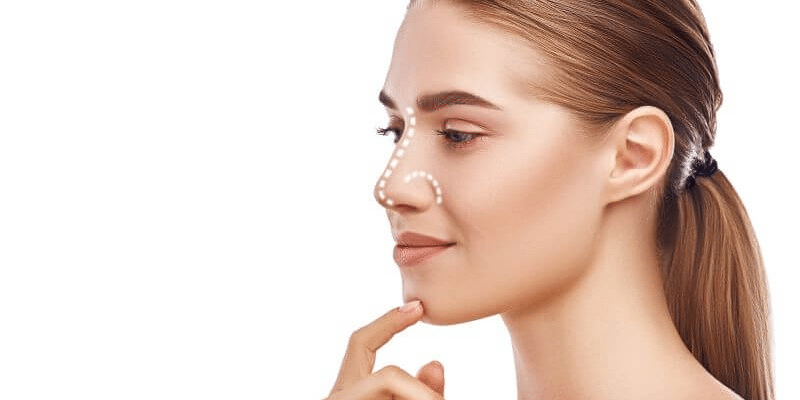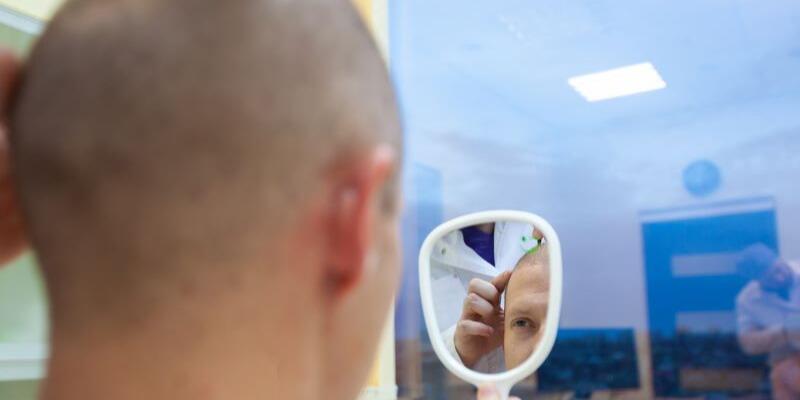Open vs Closed Rhinoplasty: What’s the Difference?
Getting a rhinoplasty is a way of having one’s nose altered. Though mostly done for cosmetic reasons like reshaping the bridge or decreasing the overall size, the surgery can also improve breathing. As with all plastic surgeries, there are different ways that this procedure can be performed, namely as an open or closed rhinoplasty. There are different categories of rhinoplasty pertaining to why they’re being performed – like a reduction or reconstruction – which will play a role in which of the two methods your surgeon uses.
There are various aspects that outline the difference between closed and open rhinoplasty surgery, ranging from what exactly each patient needs, how the surgeon will need to operate in order to fulfil these, and what the recovery will be like. We’ll break these down and look at some of the steps in between below. Both approaches have their unique merits and considerations, so getting to know these two types of rhinoplasty is a good first step for prospective patients to know precisely what to look for.
Closed vs Open Rhinoplasty: an Overview of the Key Differences

With an open rhinoplasty, the surgeon makes an incision across the columella, which is the tissue between your nostrils at the bottom of your nose. With a closed rhinoplasty, incisions are made inside the nostrils and the operation is performed through these openings that separate the cartilage from the skin, from within the nose. It will also take less time to complete a closed rhinoplasty than an open one.
Find the Right Rhinoplasty Specialist at a Fraction of the Cost
Qunomedical only lists rhinoplasty clinics and doctors that have been thoroughly vetted with quality and affordability in mind. Contact us for your 100% free, non-binding assessment.
Both types of rhinoplasty have helped patients achieve significant changes in the shape and functionality of their noses. However, each has its advantages and right application; the one you get will depend on your individual circumstances and goals. The following factors are where the key differences lie:
Visibility:
From the surgeon’s point of view, the question of open vs closed rhinoplasty is about how much of the inner nose they’ll be able to see whilst operating. The open technique is actually called that because its incisions allow the skin of the nose to be folded over; this exposes most of the inner nasal structure, granting doctors immediate and clear visibility. In contrast, a closed rhinoplasty gives limited visibility, since the operation is performed via incisions inside the nostrils.
Suitability:
Such a difference in visibility alludes to the varying extensiveness of each method. Indeed, due to the more subtle approach of a closed rhinoplasty, it is better suited to patients needing more minimal changes made. It can certainly be used to remove bumps, correct crookedness and alter the tip, but if your surgeon considers your nose to need more extensive work, they may opt for the open rhinoplasty technique, as it ultimately allows for more precision in cases that need it. Note that revision rhinoplasties are almost always performed using the open technique.
Scarring:
A big topic for any patient undergoing cosmetic surgery is scarring. It is always firstly a question of how each person’s body reacts and heals the nose job scars over time.
Both types of rhinoplasty leave scars, but the difference between open and closed rhinoplasty is that the latter’s scarring is always going to be hidden, so to speak, since the surgeon cuts inside the nostril. Since an open rhinoplasty scar is left on the columella, it will be visible, though there is the advantage of it being on the underside of the nose, plus, once the initial swelling goes down and the fading of the scar starts, it is usually harder to see.
It can take one to two years for the scar to fade, but like any scar, it will never be fully invisible. However, many people who have had an open rhinoplasty end up with minute scars that are extremely difficult to see.
Recovery:
Regardless of which technique you undergo, you’ll experience bruising and swelling in the first week. From then on, another notable difference in the open vs closed rhinoplasty question arises: the former does have a longer recovery time, since it is the more extensive surgery. There is a persistence of swelling and the healing of nose job scars that follows over the next few months, where generally, the open rhinoplasty recovery period is longer.
Cost:
An open rhinoplasty may be more expensive due to it being more complex, needing a longer operating time and a higher surgical precision. At Qunomedical, we work with many experienced nose surgeons who are skilled in both types of rhinoplasty. Regardless of the one you need, we’ll find you an affordable surgeon you can trust
Find the Right Rhinoplasty Specialist at a Fraction of the Cost
Qunomedical only lists rhinoplasty clinics and doctors that have been thoroughly vetted with quality and affordability in mind. Contact us for your 100% free, non-binding assessment.
Conclusion
Though there are significant differences between open and closed rhinoplasty procedures, the one you get is ultimately up to the surgeon. They will assess how your goals can best be attained and will judge how comprehensive the procedure will need to be. Both types of rhinoplasty are capable of achieving great results, so don’t favour one over the other; instead focus on what your long-term goals are, since both will ultimately require patience before the full results come through.
Sources:
Rohan Gupta et al (2022): 'Outcomes of Closed versus Open Rhinoplasty: A Systematic Review', last accessed on 29.09.2023
UCSF (2022): 'Closed vs. Open Rhinoplasty – The Differences to Know', last accessed on 29.09.2023
BAAPS: 'Rhinoplasty', last accessed on 29.09.2023
Related Tags
Recent Stories
- The popularity of plastic surgery abroad is soaring. But, what's the best country for breast implants? We've picked our top 7 options for quality and price. read more...
The 10 Best Countries for a Hair Transplant - In 2025
Discover the 10 best countries for a hair transplant in 2023, plus information on popular clinics and doctors worldwide. read more...Hooded Eyes Explained: Make-up, Botox, & Surgery Options
Although drooping eyelids are a phenomenon that most people probably don't even notice, they can sometimes be very disturbing for those who do. If you have ever asked yourself, ‘what are drooping eyelids?’ or have looked for different cosmetic solutions for them, this guide will provide you with some helpful answers. read more...

Patient manager
Frieda
Your personal Patient Manager
Let's talk
Still unsure? Feeling overwhelmed? Talking to a real person can give you the guidance and reassurance needed. You don’t have to do it alone. Let’s find the right doctor together.






